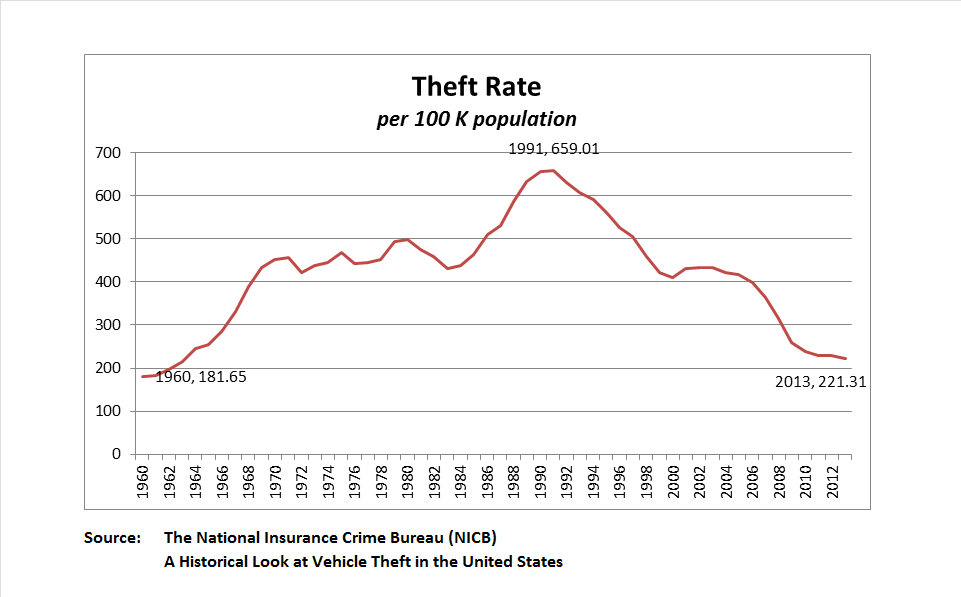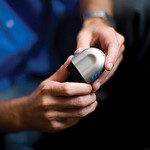If you own a vehicle, your chances of having it stolen today are significantly less than at any other time since 1960, according to an analysis by the National Insurance Crime Bureau, which compared annual statistics for thefts, population and vehicle registrations from 1960-2013.
FBI crime figures for 2013 show that 699,594 vehicles were reported stolen last year—a 58 percent reduction from 1991, when vehicle theft reached an all-time high of 1,661,738, NICB said in the report, “A Historical Look at Vehicle Theft in the United States.”
That drop is even more impressive when the population increase is taken into consideration: The theft rate in 1991 was 659.01 per 100,000 population; in 2013, it dropped to 221.3.
Since the peak in 1991, vehicle thefts have trended downward, the study found, declining 30 percent from 1991-2000, experiencing a small rise, and then dropping 43 percent from 2004-2011. In 2012, thefts increased slightly before falling again in 2013 to levels not seen since 1967.

What caused the drop?
The report said a number of factors combined to produce the decrease, starting with the innovative investigative processes developed by law enforcement and shared with organizations like the International Association of Auto Theft Investigators and the International Association of Special Investigation Units.
In addition, technology has had a significant impact in the war against vehicle theft, making cars more difficult to steal thanks to new and more reliable anti-theft protection built in during the manufacturing process or obtained after market by vehicle owners looking for additional security.
On the investigative side, technology has given law enforcement such tools as remote surveillance cameras and automated license plate readers.
Technology has also made it necessary for thieves to find more creative ways to steal cars—especially since the introduction of transponder or “smart keys” made it so hot-wiring is no longer an option.
Today’s thieves are:
- Acquiring keys illegally, whether through outright theft or by posing as the vehicle’s owner in need of a replacement key.
- Using stolen or fraudulent identities to secure loans for high-end vehicles. The vehicles are then shipped to a foreign seaport where they can be sold at a premium.
- Switching vehicle identification numbers. Thieves will use the “clean” VIN of an identical make and model in order to disguise the car and allow for resale to an unsuspecting consumer.
Source: NICB





















 Why ‘Good Enough’ Is Killing Insurance: The Hidden Cost of Satisficing
Why ‘Good Enough’ Is Killing Insurance: The Hidden Cost of Satisficing  Good Times for U.S. P/C Insurers May Not Last; Auto Challenges Ahead
Good Times for U.S. P/C Insurers May Not Last; Auto Challenges Ahead  Market Softening Accelerates During 1/1/2026 Re Renewals
Market Softening Accelerates During 1/1/2026 Re Renewals  Berkshire Hathaway Enters Post-Buffett Era as Share Prices Fall
Berkshire Hathaway Enters Post-Buffett Era as Share Prices Fall 










